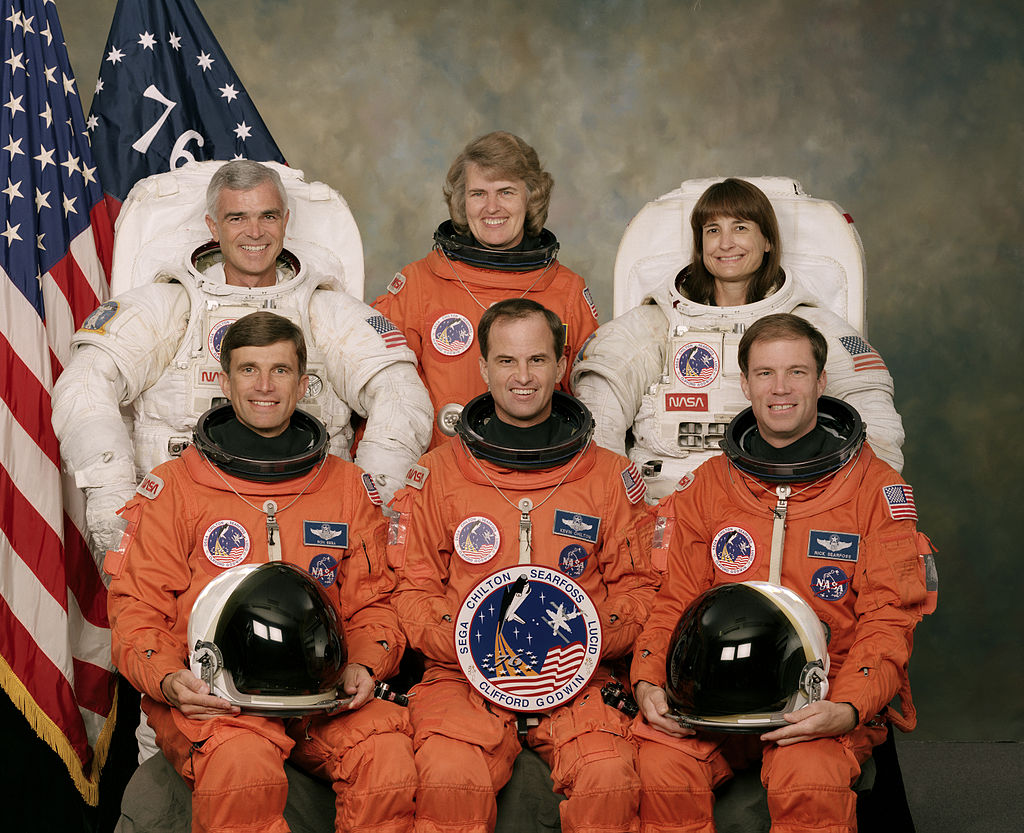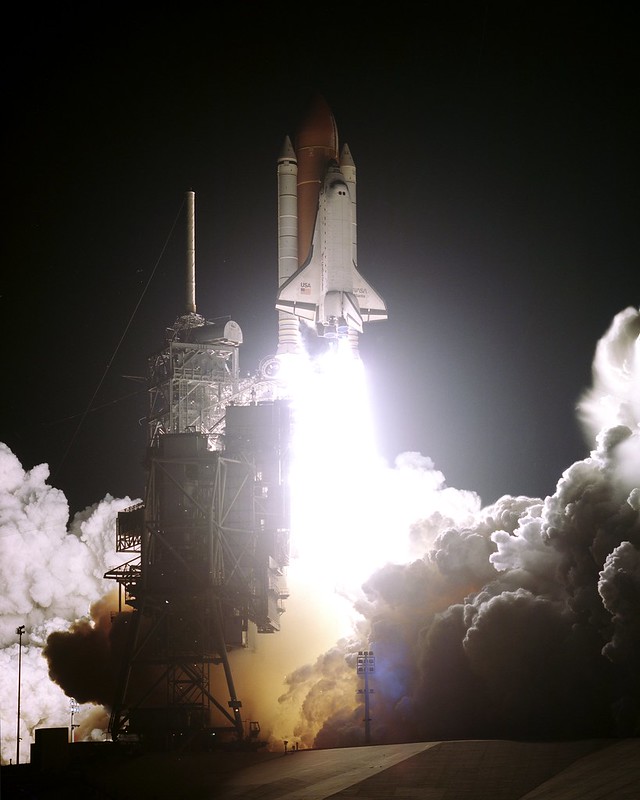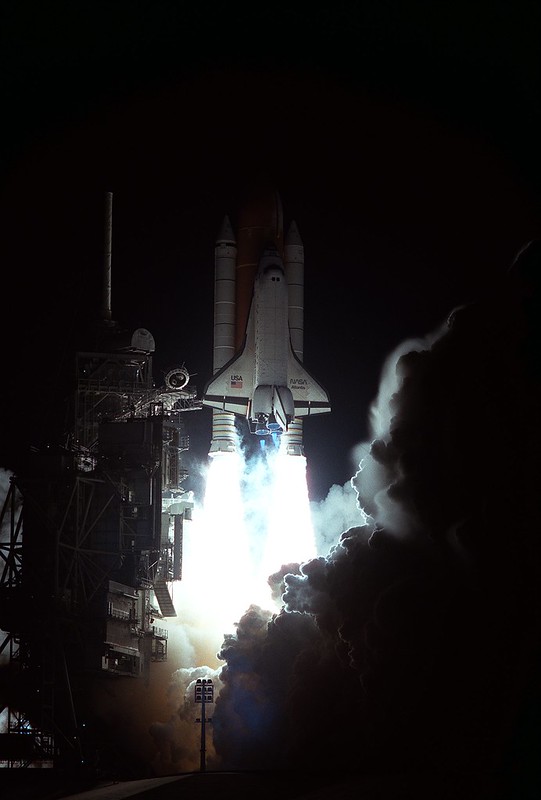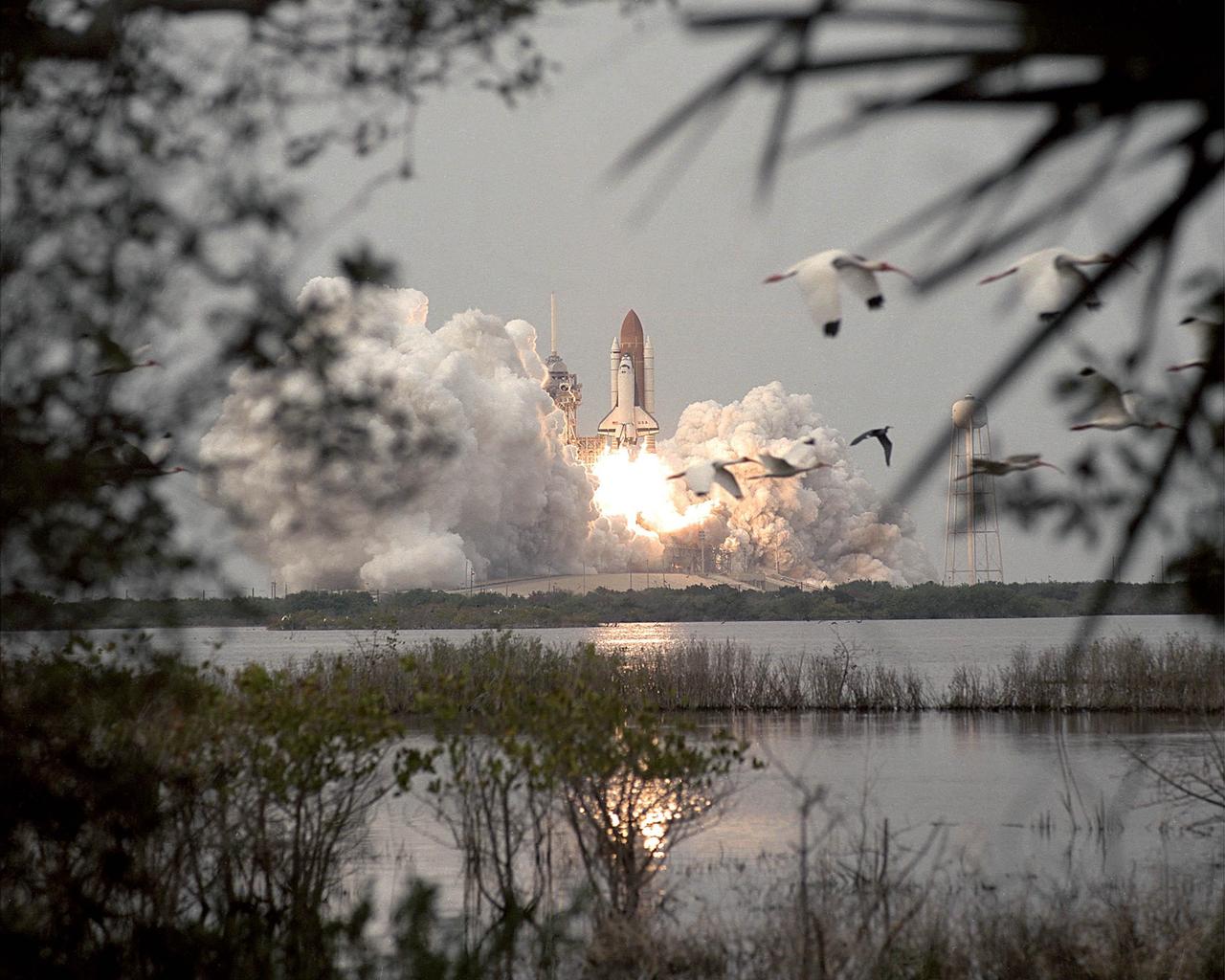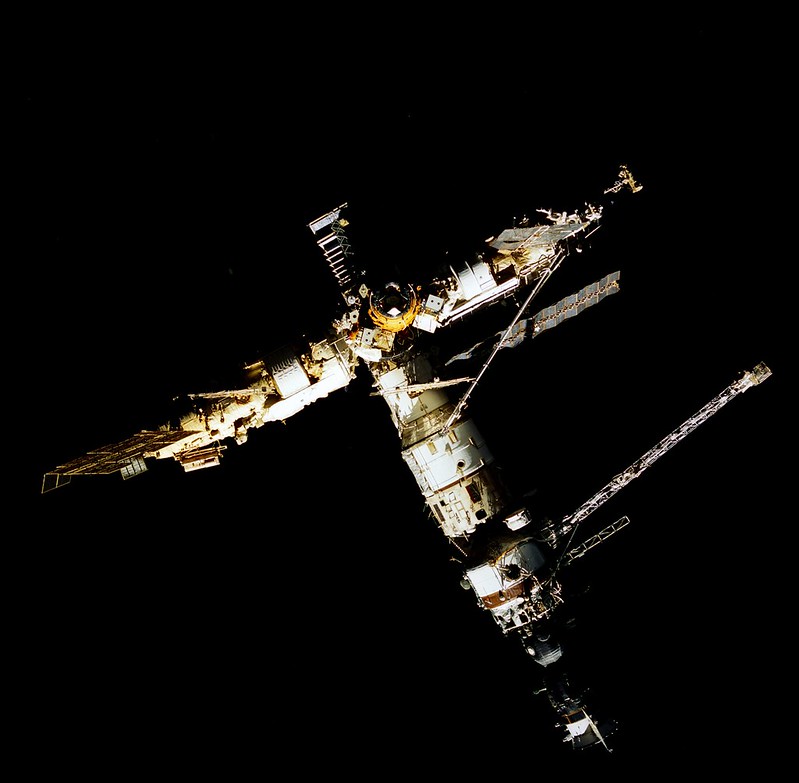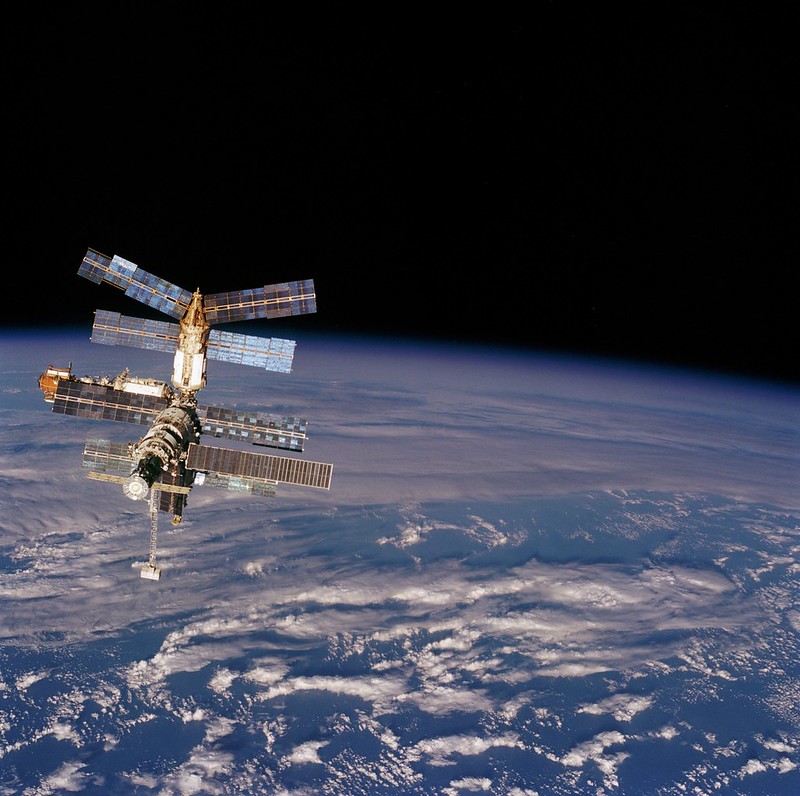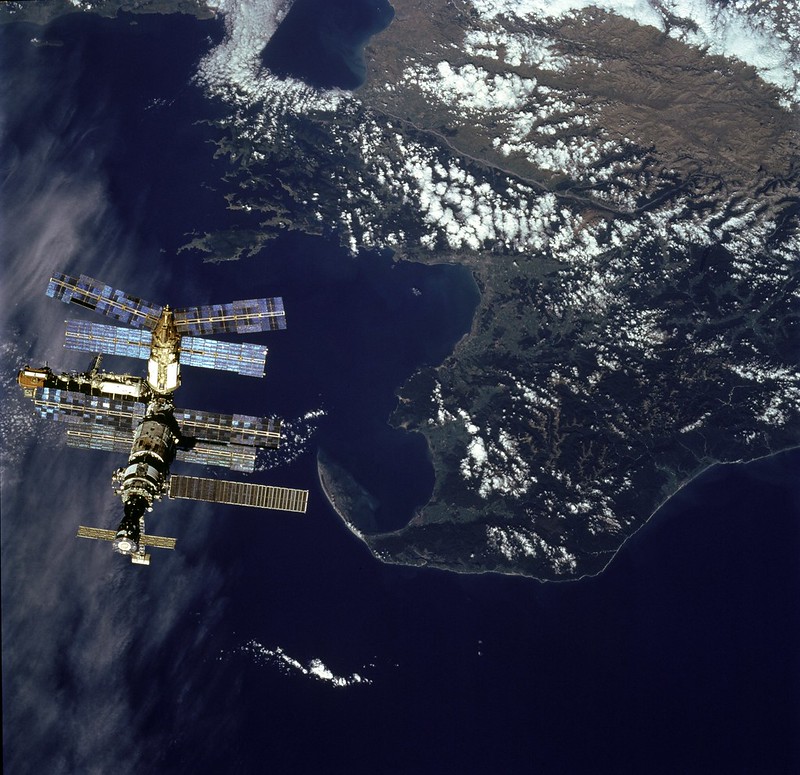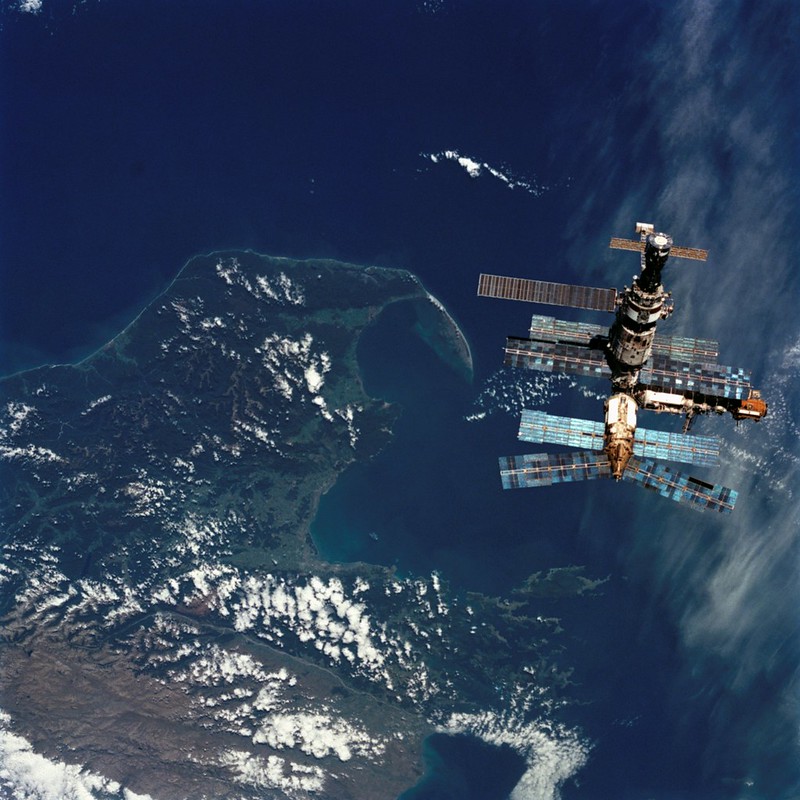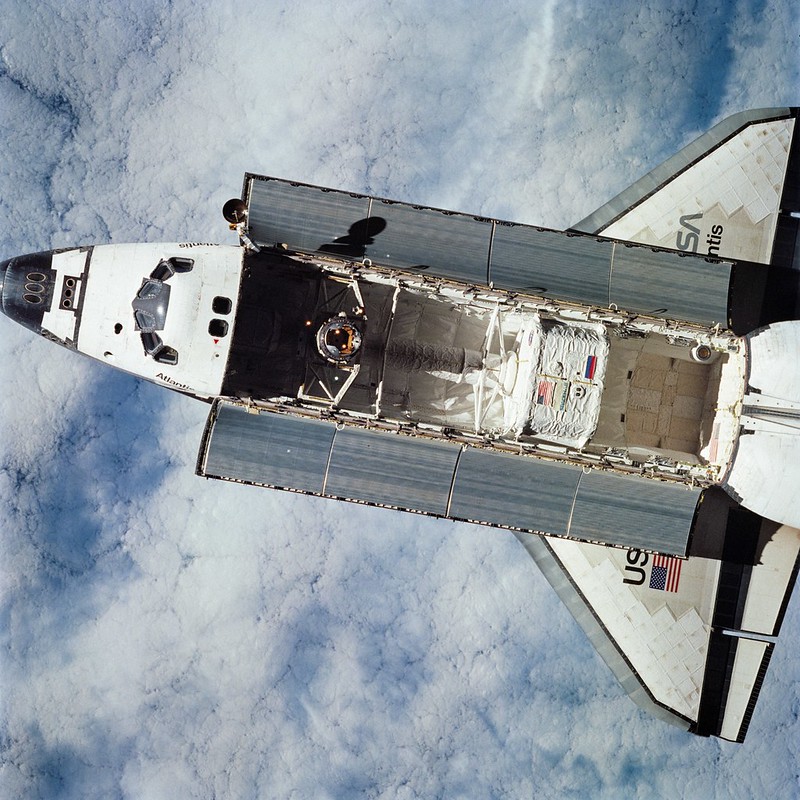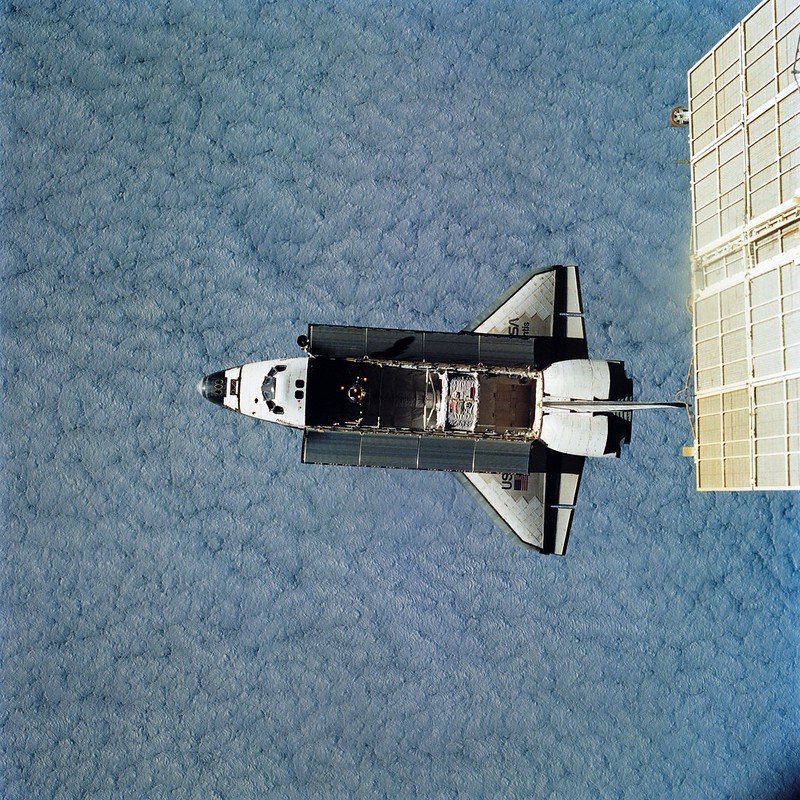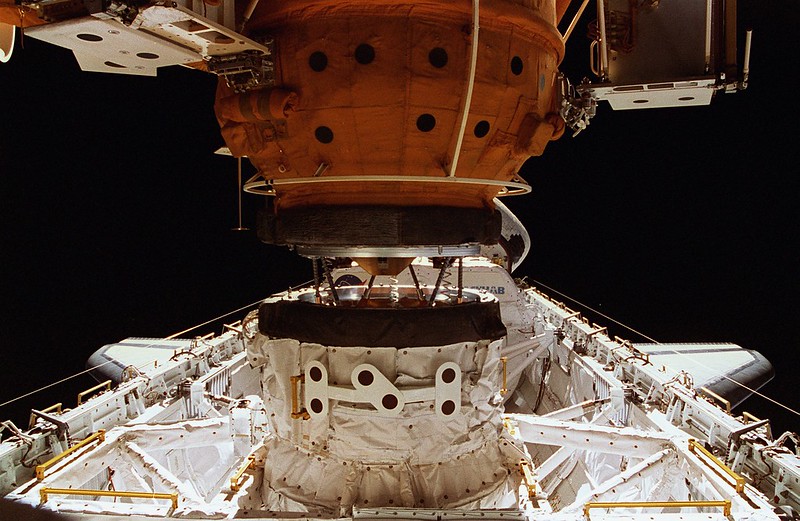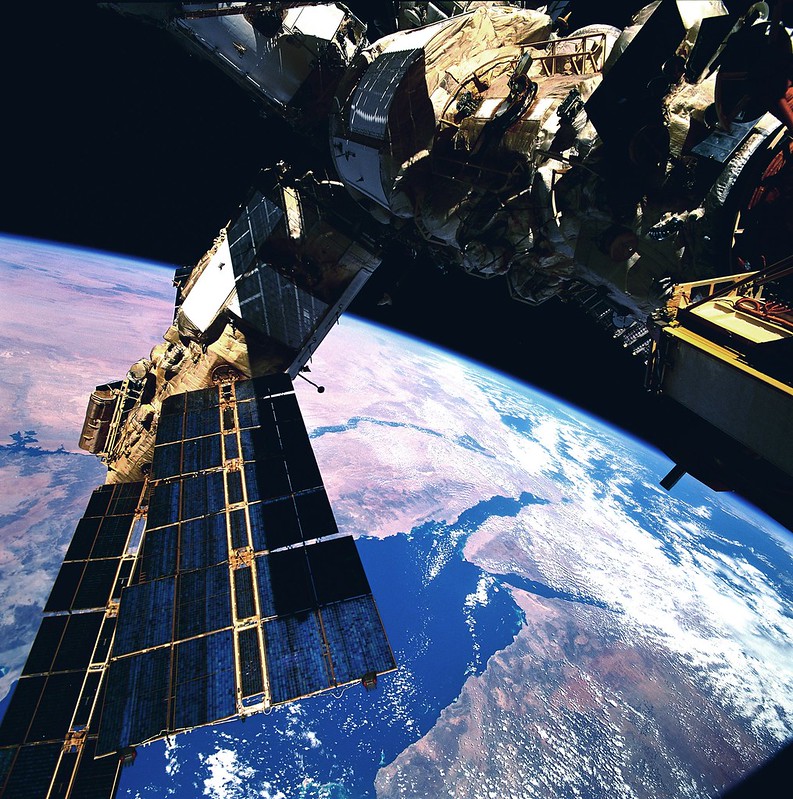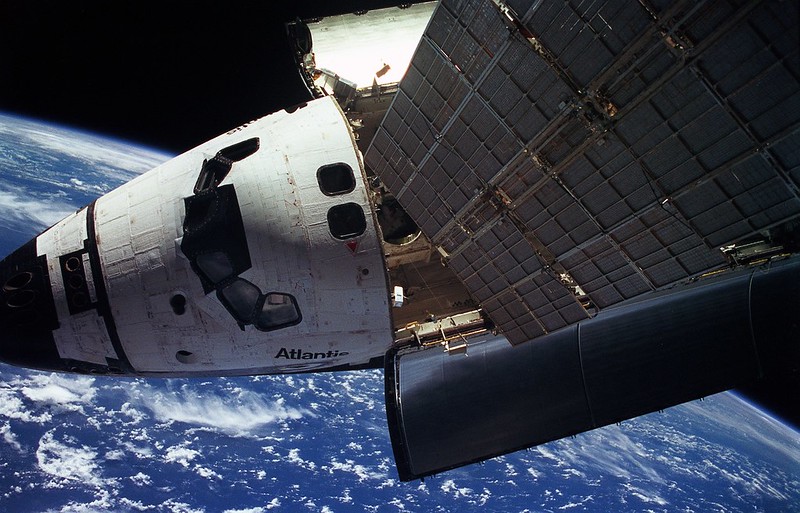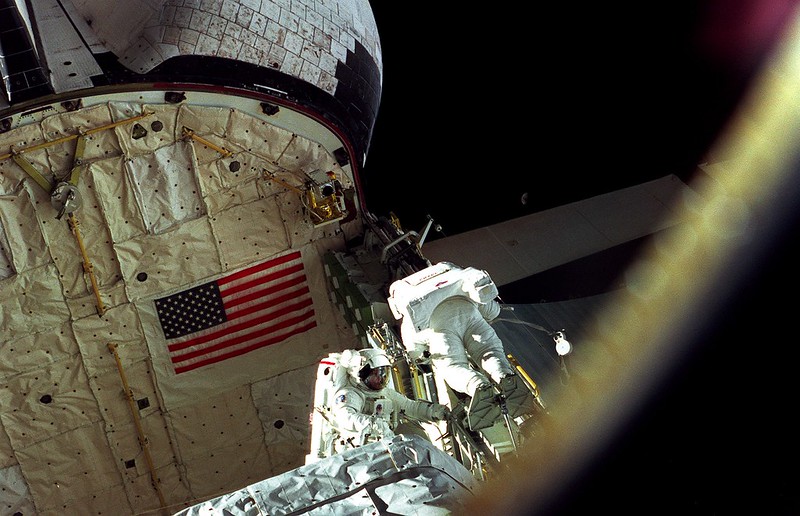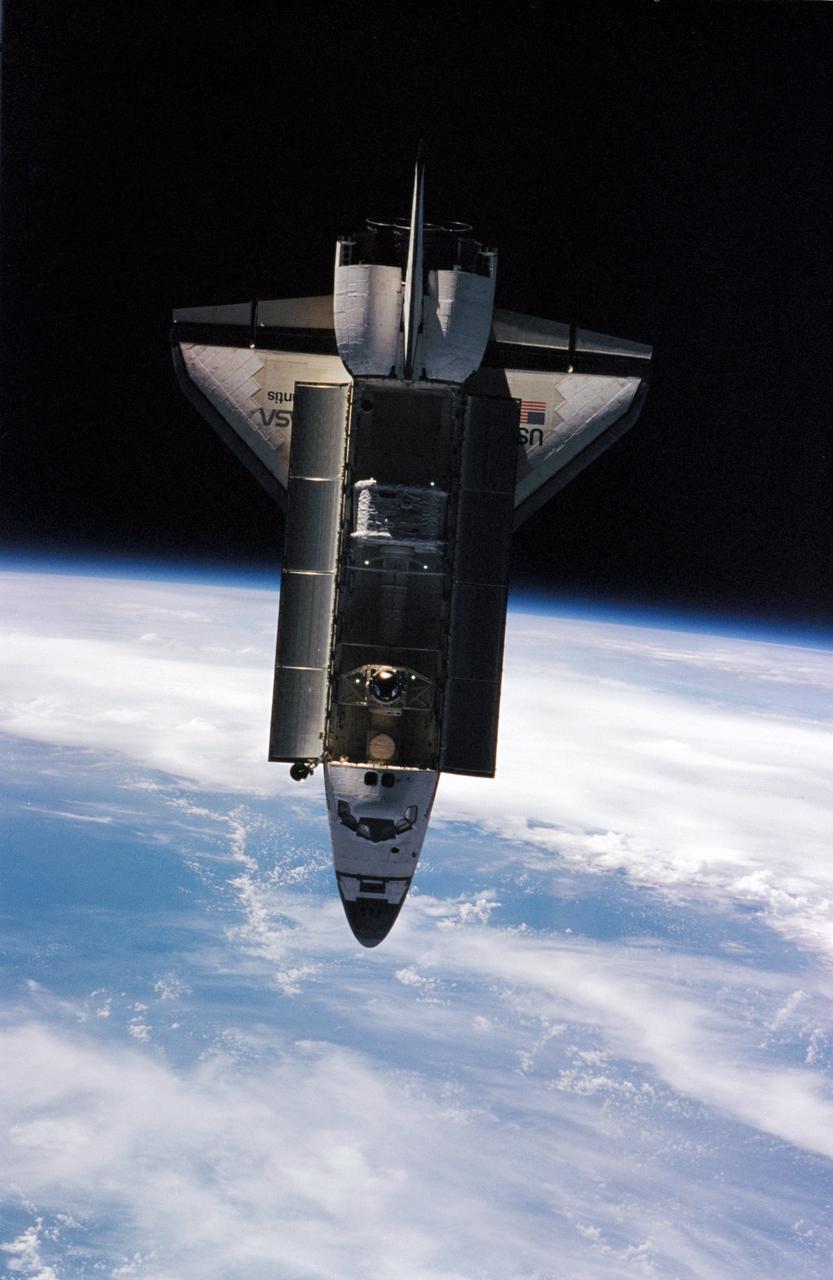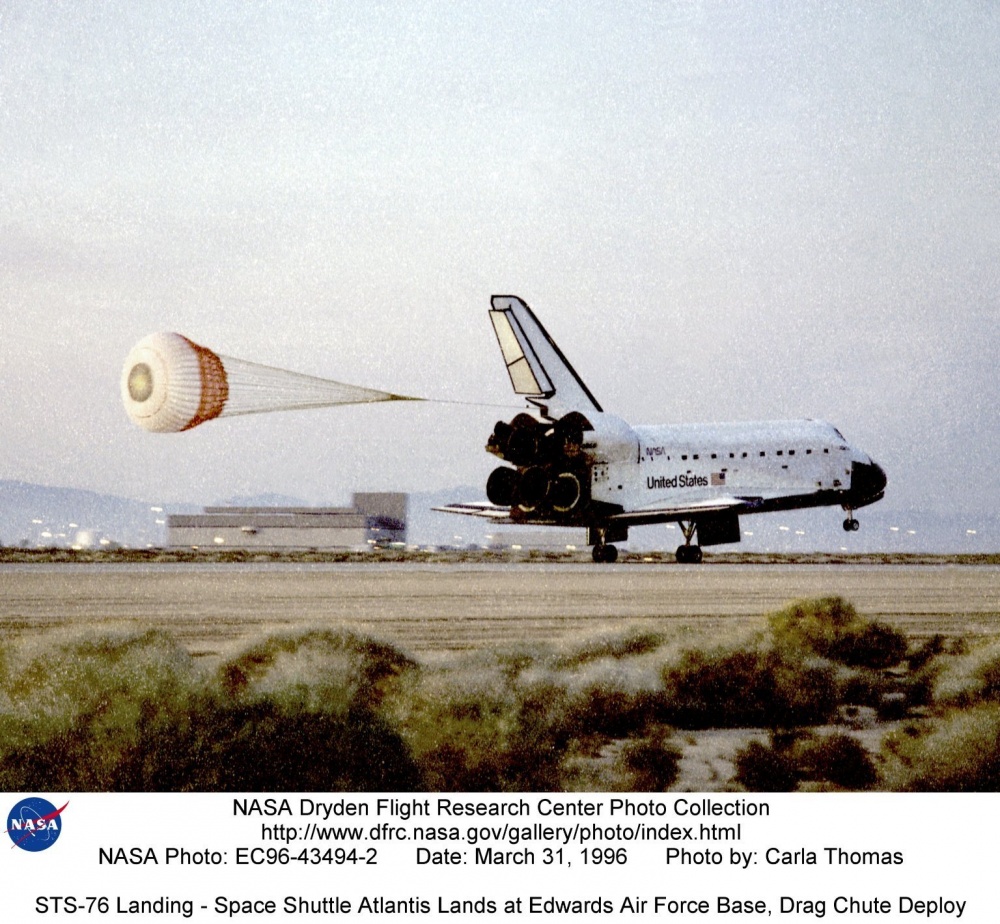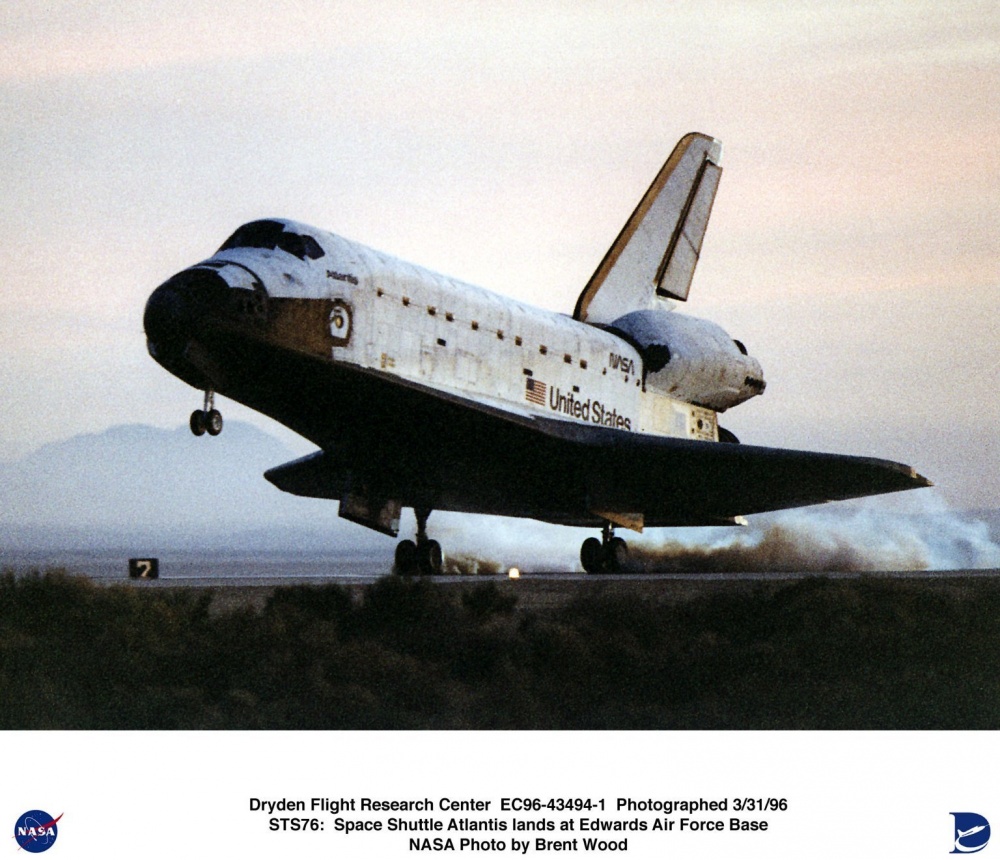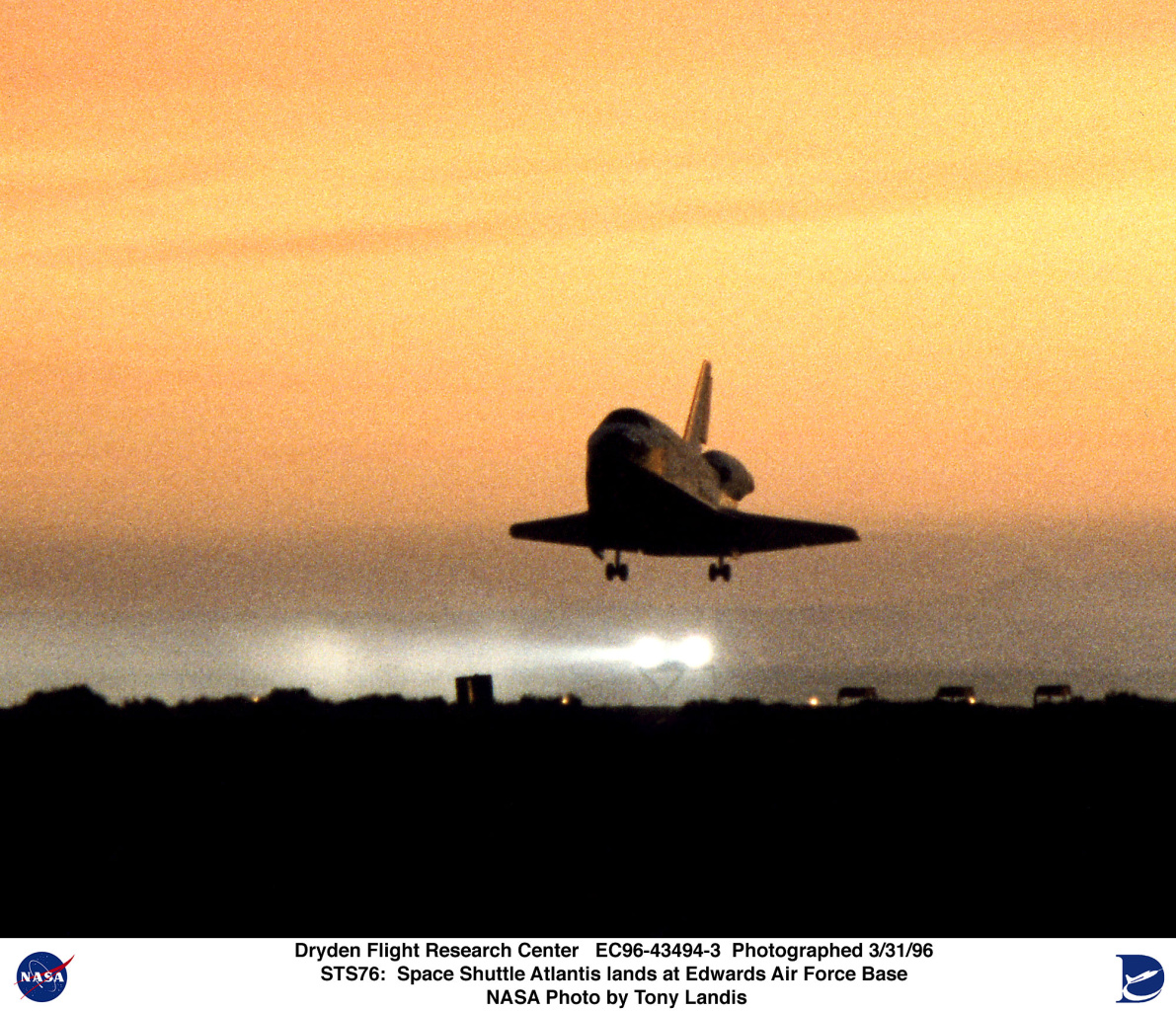STS-76 Fact Sheet
By Cliff Lethbridge

STS-76 — Atlantis
76th Space Shuttle Mission
16th Flight of Atlantis
Crew:
Kevin P. Chilton, Commander
Richard A. Searfoss, Pilot
Ronald M. Sega, Payload Commander
Michael R. Clifford, Mission Specialist
Linda M. Godwin, Mission Specialist
Embarking to Mir:
Shannon W. Lucid, Mission Specialist
Orbiter Preparations:
Tow to Orbiter Processing Facility – November 20, 1995
Rollover to Vehicle Assembly Building – February 19, 1996
Rollout to Launch Pad 39B – February 28, 1996
Launch:
March 22, 1996 – 3:13:04 a.m. EST. Planned March 21, 1996 launch attempt was scrubbed on March 20, 1996 prior to liquid fuel tanking operations due to forecast high wind conditions at the launch site.
March 22 launch occurred as scheduled with no delays. During ascent, a leak occurred in the hydraulic system powered by Auxiliary Power Unit Number Three. The leak had no adverse impact on the mission.
Landing:
March 31, 1996 – 5:28:57 a.m. PST at Runway 22, Edwards Air Force Base, California. Rollout distance was 8,357 feet. Rollout time was 55 seconds. Mission duration was 9 days, 5 hours, 15 minutes, 53 seconds. Landing occurred during the 145th orbit.
Landing was rescheduled to occur on March 30, 1996 due to a forecast of unacceptable weather conditions at the Kennedy Space Center primary landing site on March 31. Weather at the Kennedy Space Center did not permit a landing on either date.
After the March 30 landing cancellation, the crew received an indication that payload bay centerline latches 9 through 12 on both sides failed to release, suggesting that the latches had not worked properly when an attempt was made to open the payload bay doors.
Visual checks indicated that the latches were working properly, and the crew used a manual mode to complete the opening of the doors.
During pre-landing operations, a total of 38 Reaction Control System (RCS) thrusters failed and were replaced by back-up thrusters.
Mission Summary:
The mission marked the third docking of a Space Shuttle with the Russian Space Station Mir. Astronaut Shannon Lucid was transferred to Mir and became the first American woman to live on the space station.
Lucid’s stay aboard Mir began a planned two-year continuous American presence in space, the longest such stay in the history of the U.S. space program. With a planned U.S. existing record-breaking stay in space of four and one-half months, Lucid was scheduled to be relieved aboard Mir by astronaut John Blaha during STS-79.
In a single stay in space, Lucid would be considered an official member of four crews: STS-76, Mir 21, Mir 22 and STS-79.
Atlantis docked with Mir at 9:34 p.m. on March 24, 1996. Hatches were opened about two hours later. During five days of docked operations, nearly 1,500 pounds of water and 4,000 pounds of scientific equipment and experiments were transferred to Mir. Experiments were also transferred from Mir to Atlantis.
On March 27, 1996 astronauts Godwin and Clifford performed a spacewalk around the two mated space vehicles. During the 6 hour, 2 minute spacewalk, the astronauts attached four Mir Environmental Effects Payload (MEEP) experiments to Mir’s docking module and tested hardware to be used in space station assembly missions. This was the sole spacewalk of the mission.
Godwin and Clifford employed the Simplified Aid For EVA Rescue (SAFER) propulsive devices which were successfully flight-tested during STS-64.
Payloads aboard Atlantis included the Shuttle Amateur Radio Experiment (SAREX), a KidSat project experiment to encourage student participation in space exploration and the Trapped Ions in Space (TRIS) experiment flown for the Naval Research Laboratory in a GAS canister.
For the first time, a U.S. spacecraft returned to Earth with fewer occupants than when it departed.
SELECTED NASA PHOTOS FROM STS-76
